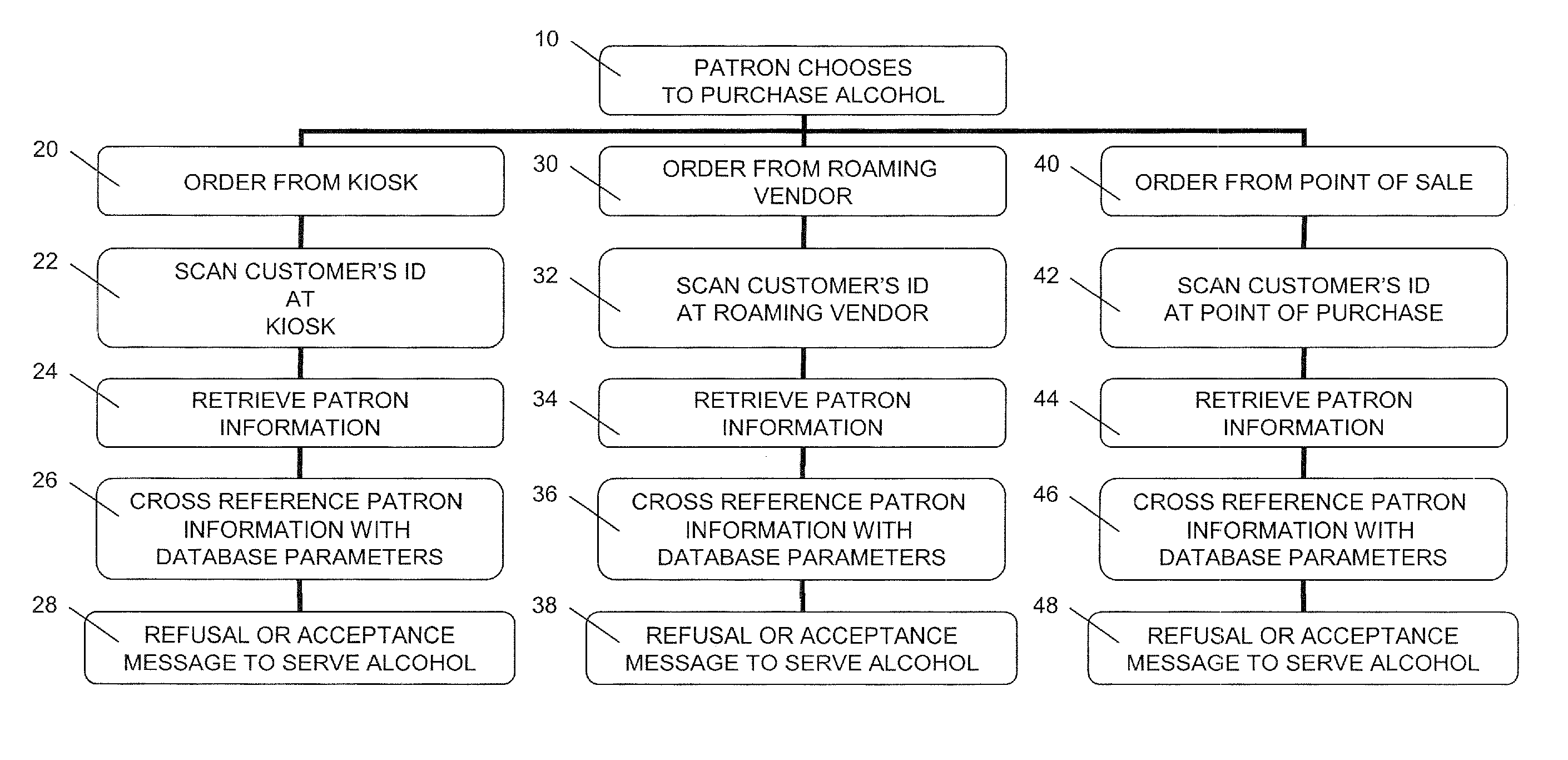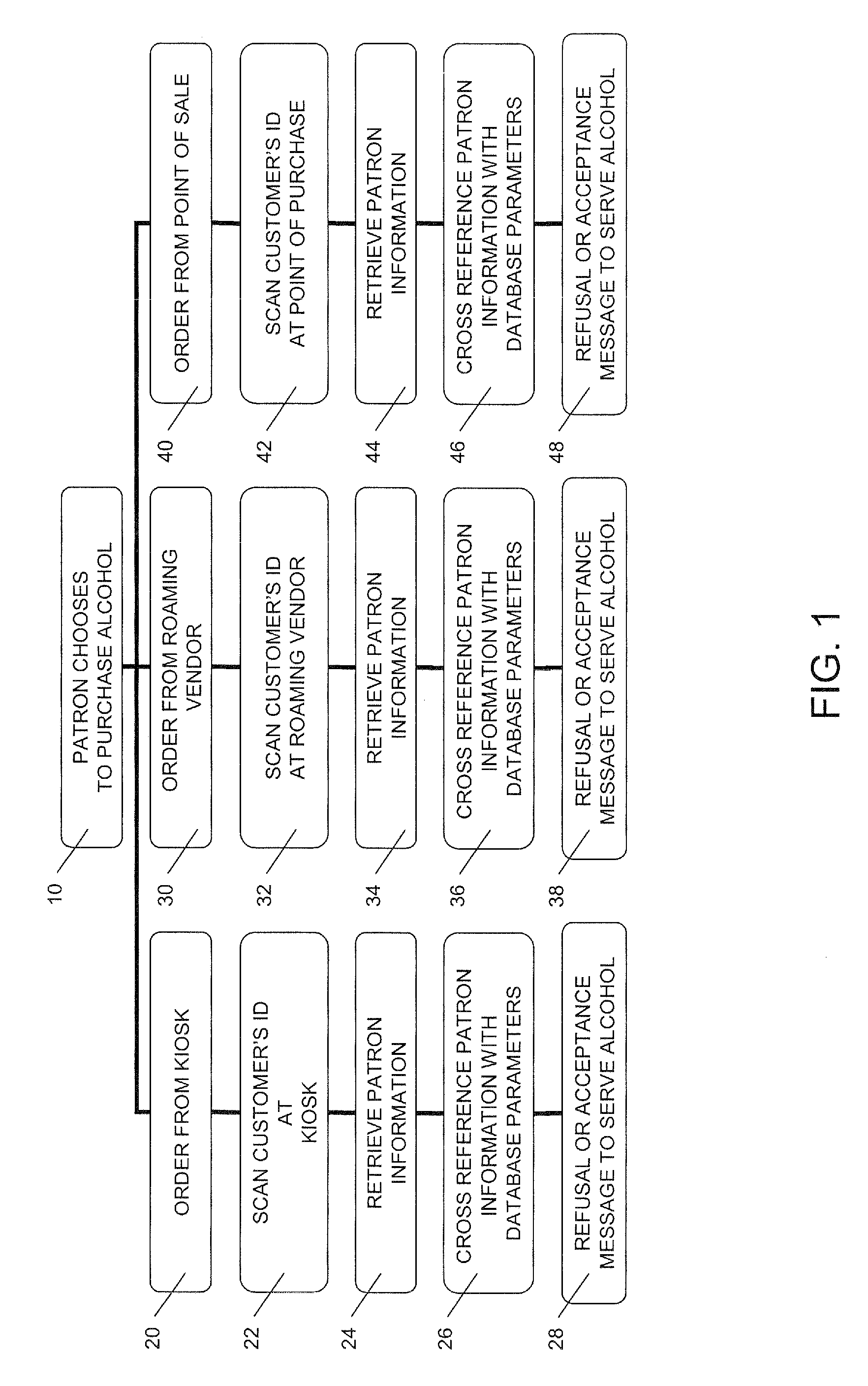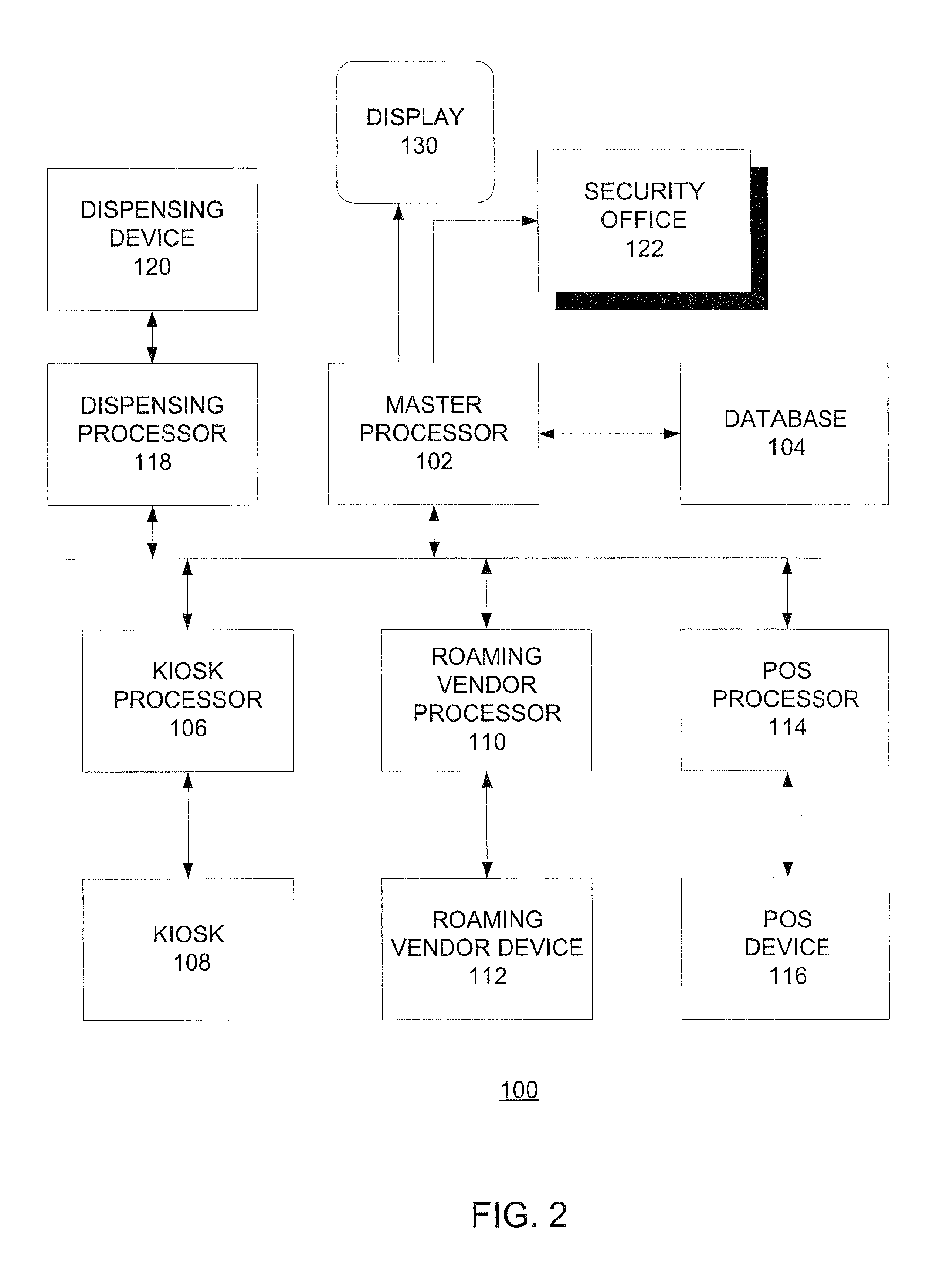System and method for monitoring alcoholic products
a technology for monitoring systems and products, applied in the field of system and method for monitoring alcoholic products, can solve problems such as government-issued forms of identification, use of proprietary patron identification methods (i.e., wristbands, magnetic cards etc.), and not universally recognized and accepted
- Summary
- Abstract
- Description
- Claims
- Application Information
AI Technical Summary
Benefits of technology
Problems solved by technology
Method used
Image
Examples
Embodiment Construction
[0027] The present invention pertains to a system that can monitor, control, track, tally, record or otherwise restrict the purchase, sale and distribution of alcoholic products within specific confines and / or time frames at a specific venue. An ongoing tally or count of sold or distributed alcoholic beverages preferably occurs at a point of purchase, but it should be understood that the information relating to the tally may be kept off site as well, at a location that is on site, but different than the point of purchase, or both. Purchases can be made using a variety of vending locations discussed herein, including standard full service counters with one or more servers, kiosks with a more limited number of products and less servers than a counter and, roaming vendors with hand-held devices, and credit / debit / cash point-of-sale devices. All such devices can be integrated with one another, giving them the capability to communicate with each other or to operate individually or to comm...
PUM
 Login to View More
Login to View More Abstract
Description
Claims
Application Information
 Login to View More
Login to View More - R&D
- Intellectual Property
- Life Sciences
- Materials
- Tech Scout
- Unparalleled Data Quality
- Higher Quality Content
- 60% Fewer Hallucinations
Browse by: Latest US Patents, China's latest patents, Technical Efficacy Thesaurus, Application Domain, Technology Topic, Popular Technical Reports.
© 2025 PatSnap. All rights reserved.Legal|Privacy policy|Modern Slavery Act Transparency Statement|Sitemap|About US| Contact US: help@patsnap.com



